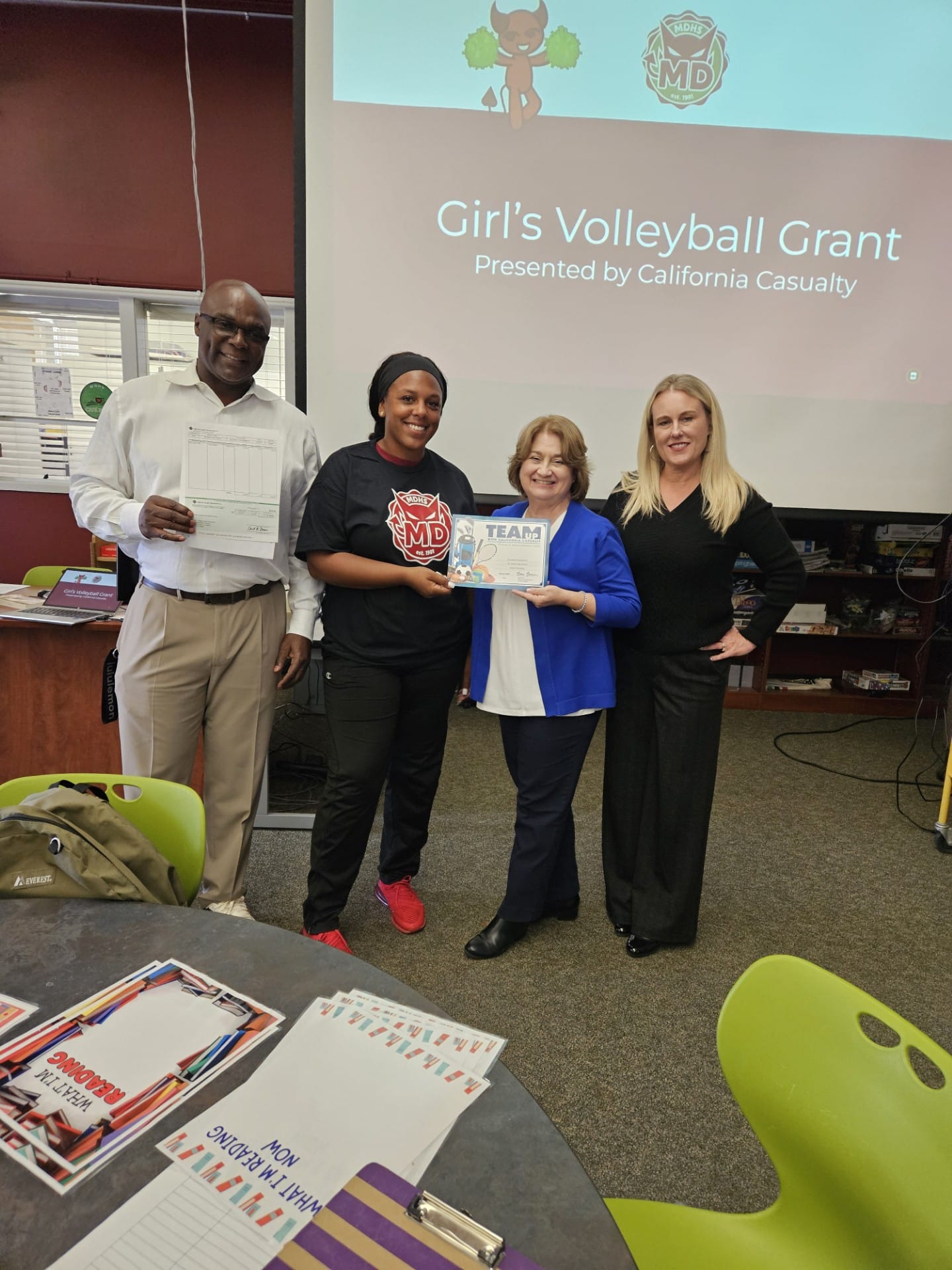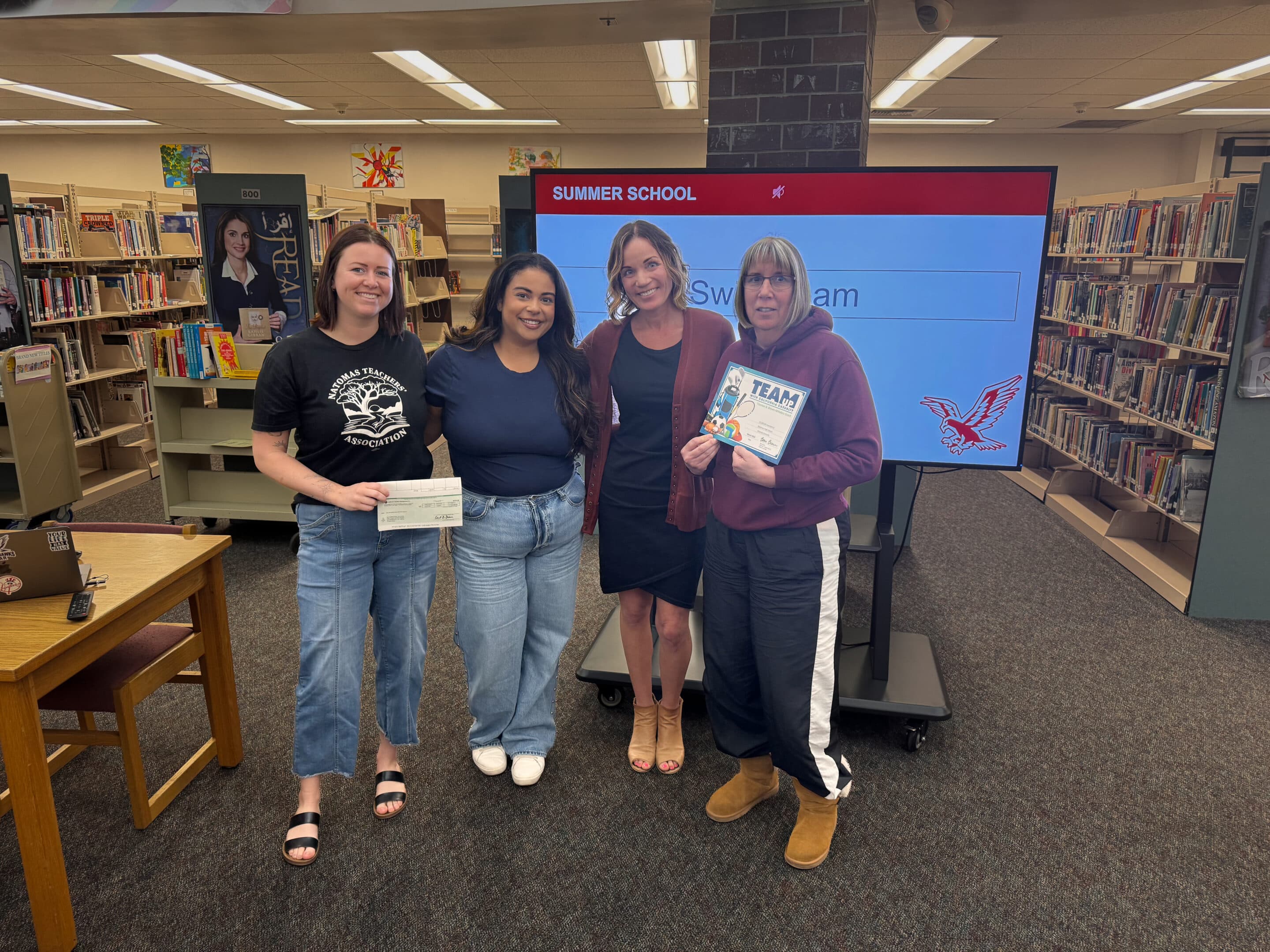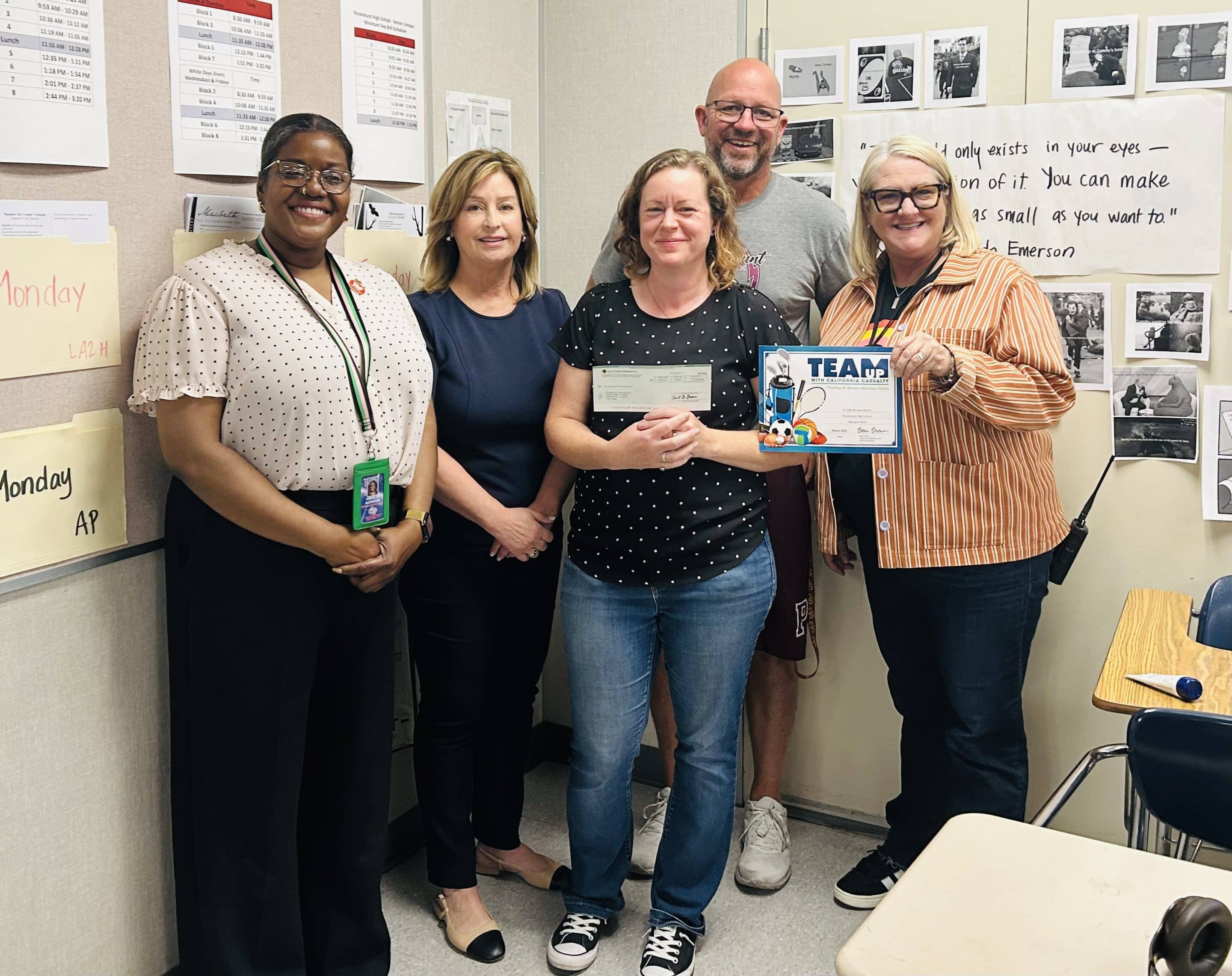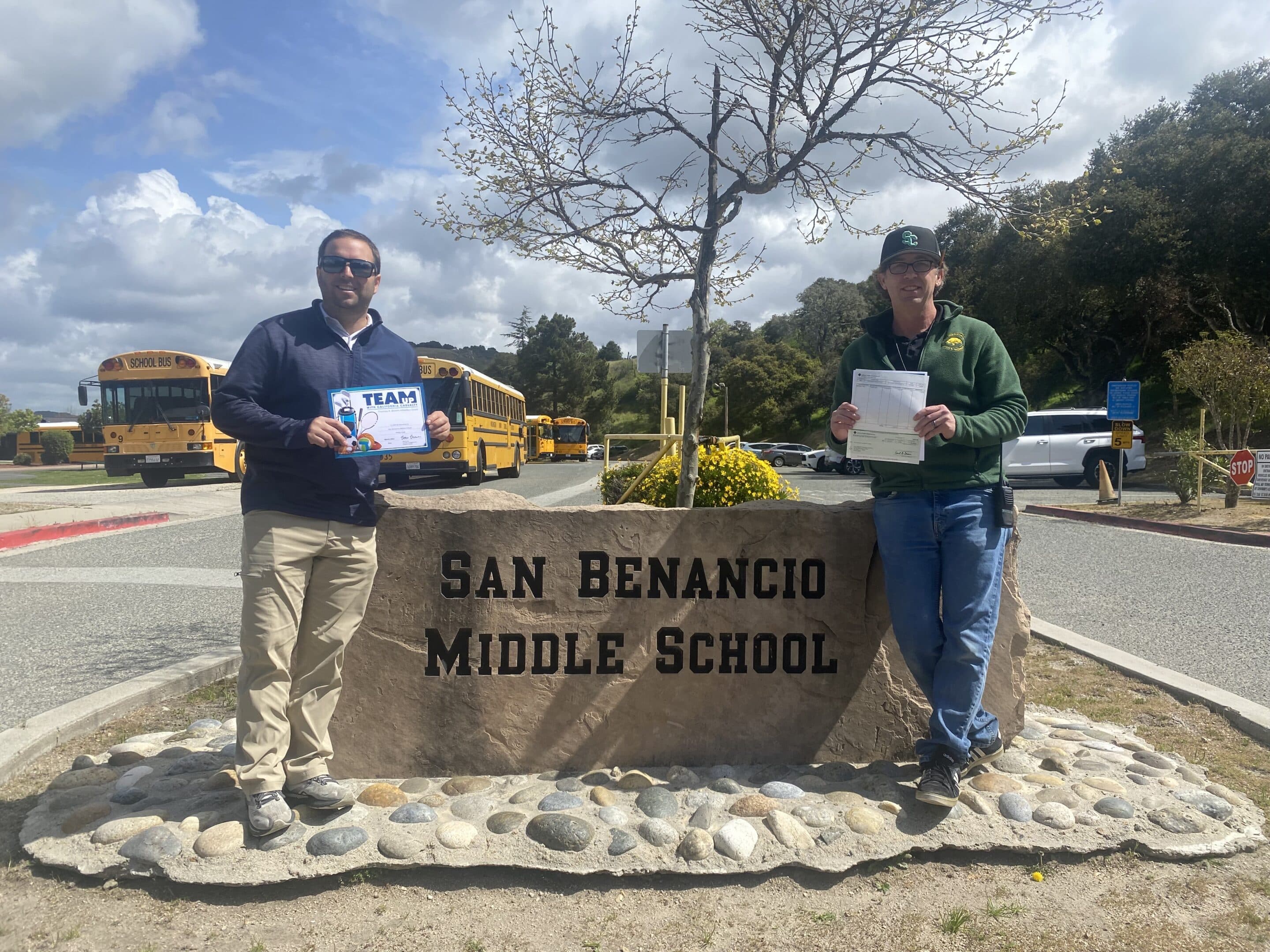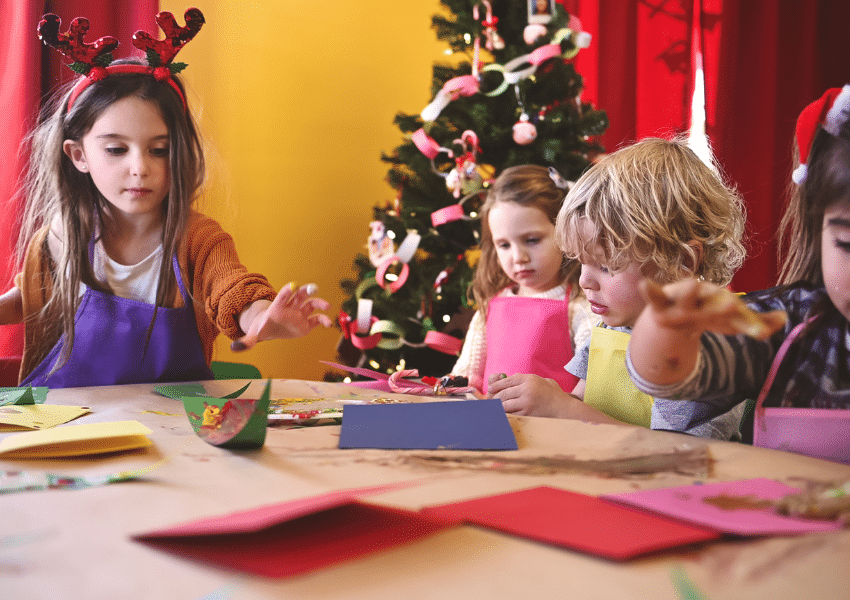
by California Casualty | Educators |
Get ready to turn your classroom into the most festive world tour your students have ever taken. From sparkling lanterns to joyful songs and colorful crafts, the season offers endless opportunities to help students discover the beauty of different cultures. By weaving these global customs into your lessons, you can create a classroom where curiosity thrives, connections grow, and every child sees their world expand in meaningful, memorable ways.
Pro Tip: Survey your class before you start the tour of the holidays. That way you can include the traditions of all your students. Then, call upon your resident “experts” and their families as you teach these lessons.
Here are the winter holidays listed in roughly date order. Note that some holidays are fixed to a date, while others will move around the calendar from year to year.
St. Nicholas Day
Observed in parts of Europe on December 6, this holiday honors St. Nicholas, known for anonymous gift-giving and acts of kindness.
Classroom Activity:
- Have students leave their shoes in the hallway. Ask a staff member or parent fill the shoes with treats like stickers, pencils, or candy for a joyful surprise.
- Reward acts of kindness in your classroom with St Nicholas stickers.
- Organize a service project such as a classroom collection of socks or toys, or have your students write notes to seniors in nursing homes.
Las Posadas
Las Posadas is a beloved Mexican and Latin American tradition held Dec. 16–24. It reenacts Mary and Joseph’s search for shelter. The celebration features processions, candlelit prayers, music, and piñatas.
Classroom Activity:
- Make decorative paper-bag lanterns with flameless candles.
- Create individual mini piñatas with paper cups decorated with colorful crepe paper fringe. Fill them with candy.
- Have students act out the procession by knocking on classroom doors and when welcomed, singing a Spanish song and giving out treats.
St. Lucia Day
Celebrated on December 13 in Sweden, Norway, and Finland, this Festival of Light honors St. Lucia. The celebration features candlelit processions, saffron buns, and gingerbread treats. There are themes of light and kindness.
Classroom Activity:
- Find the Scandinavian countries on a map and learn about their locations and climates.
- Make paper St. Lucia crowns with candle cutouts.
- Read by “candlelight” (flashlight or flameless candles) in your classroom. If you like, include a gingerbread treat.
Hanukkah
The eight-day Jewish Festival of Lights commemorates the rededication of the Second Temple. Students enjoy learning about menorahs, dreidels, and foods fried in oil like latkes and donuts.
Classroom Activity:
- Play the dreidel game (math integration bonus!)
- Make edible dreidels. Put a pretzel stick in a marshmallow for the top. Use icing to “glue” a Hershey’s kiss to the bottom.
- Make a paper plate menorah. Cut it in half and draw the candelabra branches. Decorate with construction paper candles.
Dongzhi Festival
This East Asian festival celebrates the Winter Solstice — the shortest day and longest night of the year. It’s observed by eating symbolic foods like rice balls and dumplings.
Classroom Activity:
- Make a yin-yang design as a lesson on balance and harmony.
- Create simple lanterns to celebrate the return of light.
- Explore the concept of the Solstice and track when spring will arrive.
Eid al-Fitr
Eid marks the end of Ramadan and emphasizes empathy, gratitude, and charity. Feasting, giving gifts, and sharing with the community are common.
Classroom Activity:
- Create mobiles featuring the crescent moon and stars.
- Make a kindness jar inspired by Eid traditions. Use it to record acts of kindness that students are doing in your class and outside of it.
- Use a world map to find the countries that celebrate Eid al-Fitr.
Christmas
Celebrated worldwide on December 25, Christmas includes traditions ranging from religious observances and nativity scenes to more secular gift-giving, caroling, and decorating trees.
Classroom Activity:
- Use your classroom library to host a Book Flood like Iceland does for Christmas Eve.
- Make and decorate stockings or ornaments.
- Use the 12 Days of Christmas song for a math tie-in. Younger grades can draw, group and count the gifts; older ones can total the cost for each day.
Kwanzaa
Kwanzaa is a celebration of African heritage observed in the U.S. from Dec. 26–Jan. 1. Each day honors one of the Seven Principles, represented by candles in a kinara. The principles are unity, self-determination, collective work and responsibility, cooperative economics, purpose, creativity and faith.
Classroom Activity:
- Cut red and green paper strips and weave them through black construction paper into a Kwanzaa mat, called a mkeka.
- Use cardboard toilet paper rolls to create a kinara with one black, three red and three green candles.
- Older students can look up the meanings of the principles and create stories that show a principle in action.
Chinese New Year (Lunar New Year)
Chinese New Year is a vibrant celebration of renewal, family, and good fortune marking the start of the new lunisolar year (between Jan. 21 and Feb. 20). Students love learning about zodiac animals, lanterns, and the symbolism behind red decorations.
Classroom Activity:
- Have students discover their zodiac animal, or choose one that they like, then write a short persuasive piece about why it fits their personality.
- Create paper lanterns to adorn the classroom.
- Decorate red envelopes and fill them with written wishes for the new year.
With thoughtful preparation, accurate research, and family involvement, the holidays can become a memorable learning journey around the world. And no matter how you celebrate, happy holidays from all of us at California Casualty!
This article is furnished by California Casualty, providing auto and home insurance to educators, law enforcement officers, firefighters, and nurses. Get a quote at 1.866.704.8614 or www.calcas.com.
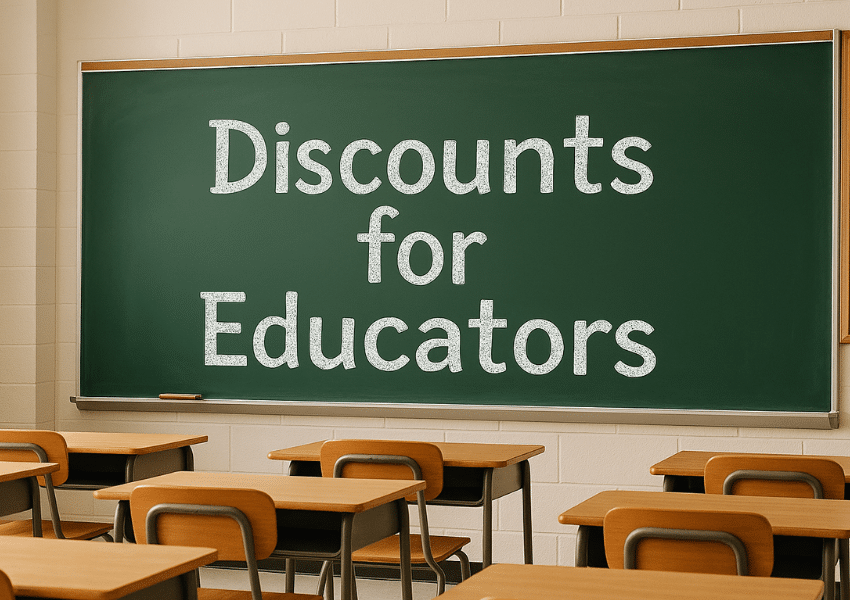
by California Casualty | Educators, Helpful Tips |
As a teacher, you don’t just teach lessons—you pour in your time, energy, and heart. The good news? Lots of businesses are ready to give you a gold star in return: discounts! From classroom supplies to cozy clothes, travel to tech, you can snag serious savings just by flashing your school ID. Call it your well-deserved “extra credit.”
We’ve made it easy—just click a store’s name to see the deal. And here’s a pro tip: many retailers roll out even bigger perks during Teacher Appreciation Week, so keep an eye out for those bonus savings.
Auto & Home
Packing up your home? Teachers save 20% on local moves and 15% on one-way moves.
America’s everyday heroes deserve savings every day. Educators (and your families) get special rates on home and auto insurance.
Catch some well-earned ZZZs with 10% off Purple’s famously comfy mattresses.
Enjoy peace of mind for less—teachers get 20% off Ring doorbell cameras.
Get Artsy
Stock up on glue sticks, glitter, and all things crafty! Teachers score 15% off their entire purchase—even sale items.
Bags & Backpacks
From colorful totes to sturdy backpacks, educators enjoy 10% off Vera Bradley favorites.
Bookworm’s Paradise
Join the invitation-only Educator Program for exclusive discounts on bestselling books and classroom materials.
Educators get 20% off in-store purchases plus free shipping online. Extra savings roll in during Educator Week!
Clothing that’s Classroom Chic
Look sharp for less with a 20% educator discount.
Save 15% online or in-store—prep-school style, anyone?
Enjoy 20% off every purchase from this California-based retailer.
For practical and timeless style, teachers get 10% off their order.
Save 15% on cool, casual staples in-store and online.
Go preppy with 15% off Vineyard Vines’ iconic styles.
Foodie Favorites
Teachers snag a membership for just $25 (regularly $60) and get a $10 reward to boot.
Get half off your first box, 10% off future boxes, free shipping on the first—and yes, dessert for life. Now that’s a sweet deal!
Sonic
Join the Sonic Teachers’ Circle for free deals and tasty discounts. Just enroll in the Sonic app and let the rewards roll in. Download the Sonic app, then create an account, go into Settings, tap the Profile icon, tap Account and select “I’m a Teacher” to enroll.
Shoes that Score an A+
Educators save big—30% off retail and 20% at outlet stores.
Comfy and quirky, Crocs offers 15% off full-priced styles.
Get 20% off Rothy’s stylish, sustainable shoes made from recycled materials.
Stock Up on Supplies
Earn 25% back in bonus rewards on qualifying purchases, plus a one-time 20% discount when you sign up.
Sharpen your savings with 10% off for educators.
The Reward a Classroom program at Staples enables parents to donate their Staples rewards straight to your classroom.
Target Circle Teacher Appreciation brings discounts across classroom supplies, food, home goods, clothes, and more.
Tech Time
Apple offers educator discounts on various products including Macs, iPads, iPhones, Apple watches, AirPods and more.
This online design program is 100% free to teachers. Create infographics, posters, video, and more.
Hewlett Packard offer savings of up to 40% on advanced technology.
Verizon offers discounted mobile phone plans and home internet pricing for educators.
Travel & Adventures
Enjoy $150 off your next sun-soaked getaway – don’t forget the sunscreen!
Teachers get a free annual pass with a 20% discount on onsite food and merchandise purchases. You also get 20% off tickets for friends and family.
Educators can save up to 25% on everyday base rates for rental cars and enjoy some bonus offers too!
K-12 teachers get complimentary entry to the visitor complex with an educator study pass.
Save when booking accommodations through Hotels.com—perfect for that much-deserved getaway.
Do you have a favorite teacher discount that’s not mentioned here? Share it in the comments.
This article is furnished by California Casualty, providing auto and home insurance to educators, law enforcement officers, firefighters, and nurses. Get a quote at 1.866.704.8614 or www.calcas.com.
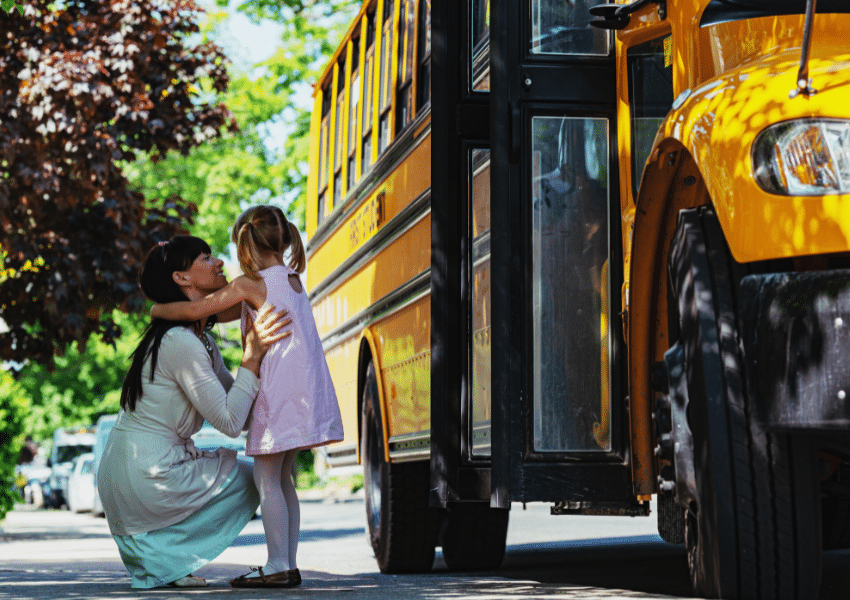
by California Casualty | Educators, Helpful Tips |
The first day of school can feel like stepping onto a stage—new faces, new routines, and a swirl of emotions. For kids, it’s both exciting and nerve-wracking; for parents, it’s a delicate balance of encouragement and letting go. By helping your child manage those first-day jitters, build independence, and embrace challenges with a growth mindset, you can set the tone for a year filled with confidence and curiosity.
Here are some simple ways to help your child feel ready—emotionally and practically—for the year ahead.
Listen—Really Listen—to Your Child
Back-to-school season is a big transition, and change can be unsettling. Ask your child how they’re feeling about the new year. Are they excited to see friends? Nervous about a new teacher? Unsure about tougher schoolwork?
Validate those feelings. Let them know that it’s normal to feel a mix of emotions—and that even teachers feel that way sometimes. For younger kids, support might mean extra hugs, a comforting meal, or a favorite bedtime story. For older kids, try meditation, a walk together, or a phone call with a friend. The key is to ask what they need and follow their lead.
Help Them Acclimate Early
If your child is starting at a new school, attend an open house or schedule a tour so they can see the space beforehand. Arrange to meet the teacher(s) if possible. Encourage reconnecting with school friends before the first day. You might even want to join the parent-teacher association to connect with other families.
Build Skills Before Day One
Help your child feel ready for both academics and logistics.
- For middle schoolers, practice locker combinations. Buy an inexpensive combination lock for hands-on practice at home.
- Role-play scenarios like asking a teacher for help, changing classes, or joining a group activity.
- Work on skills like time management, organization, or social confidence.
Support Sleep and Nutrition
Kids learn and cope better when they’re well-rested and well-fed.
- Aim for 9–12 hours of sleep for younger kids and 8–10 hours for teens.
- Create a calming bedtime routine—dim lights, no screens and quiet activities like reading.
- In the morning, serve a balanced breakfast with protein, whole grains, and fruit, and pack healthy snacks to keep energy steady.
- Don’t forget a water bottle to stay hydrated throughout the day.
Make Sure They’re Fully Prepared
A little preparation goes a long way toward easing first-day nerves and setting your child up for success. Involve them in the process so they feel invested and ready to start strong.
- Finish summer assignments early to avoid last-minute stress.
- Shop together for school supplies so they can pick items they’re excited to use.
- Choose back-to-school clothes Let them select outfits that are comfortable and help them feel confident.
- See our money-saving tips for back-to-school shopping.
Ease into the New Routine
Talk through the school-day schedule for the whole family, from morning wakeups to after-school activities. A week before school starts, begin shifting bedtimes and wakeup times so the first day isn’t a shock.
Plan for a stress-free school morning:
- Lay out the first-day outfit (let kids choose).
- Pack the backpack and lunch.
- Allow plenty of time for dressing, hygiene, and breakfast.
Teach Positive Self-Talk
Help your child manage stress with healthy coping tools. Teach them a positive mantra, such as “I am strong. I belong. I can do this all day long” or “I am brave. I am bright. I can shine with all my might.” Have them say it out loud in front of a mirror as part of morning routine. Deep breathing, stretching, or quick mindfulness exercises can help calm first-day nerves. Child-friendly meditation apps, soothing soundscapes, or bedtime stories can also work wonders.
Manage Separation Anxiety
For younger children, reassure them that school is a normal and important part of life. Let them know exactly when you’ll be back for pickup—it’s comforting for kids to have a clear mental timeline.
Foster Age-Appropriate Independence
Small, age-appropriate responsibilities help kids feel proud, capable, and ready to take on more as they grow.
- Younger children can carry their own backpack and lunch.
- Older students can also make their lunch and plan their homework schedule.
- Remind kids about back-to-school traffic safety.
Create a Relationship Map
Draw a map with your child at the center, surrounded by trusted adults at school—teachers, counselors, aides—who can help. Knowing exactly who to go to makes asking for help less intimidating.
Check in with your child
At dinner or bedtime, ask open-ended questions like: “What made you smile today?” or “What was tricky?” These prompt more thoughtful answers than “How was your day?”
Watch for Signs of Struggle
If your child shows ongoing signs such as unusual sleep issues, irritability, poor concentration, low energy, loss of appetite, headaches, or frequent tears, consider reaching out to a school counselor or therapist for additional support.
By blending emotional support, practical preparation, and opportunities for independence, you can help your child start the school year with confidence and curiosity—ready to take on whatever comes their way.
This article is furnished by California Casualty, providing auto and home insurance to educators, law enforcement officers, firefighters, and nurses. Get a quote at 1.866.704.8614 or www.calcas.com.

by California Casualty | Educators |
You’ve got the keys, the blank slate, and a million Pinterest ideas—now what? If you’ve ever rearranged your classroom 14 times only to end up where you started or discovered that nothing will stick to your cinderblock walls, you’re not alone. Setting up your classroom is part science, part art, and part survival skills. Here’s how to make your space functional, organized, and ready for your best school year yet.
1. Start with a Floor Plan—on Paper
Save your back (and your sanity) by planning before you push a single desk. Measure your room and create a layout in Canva so you can test different setups—rows, clusters, flexible seating zones—without breaking a sweat. Keep the file handy so you can tweak it later in the year. Bonus: Take a stroll through your coworkers’ classrooms for fresh inspiration.
2. Be Strategic with Your Teacher’s Desk
Don’t just plop your desk in the front of the room because “that’s where it goes.” Think sight lines—you want to be able to see everyone from where you sit. Consider angling your desk in a corner and blocking the space behind it with brightly colored floor tape (students will quickly learn that’s a “no-go” zone). Check the view from the back of the room before committing.
3. Create a Teaching Station
Your teaching station is home base for lessons—a spot where your day’s materials are ready to grab. This could be part of your desk, or better yet, a separate area that keeps supplies organized and within reach. The less time you spend hunting for markers, the more time you have for teaching.
4. Master the Art of Storage
Clutter = chaos. Designate clear zones for students to pick up materials and turn in work. Keep frequently used items like pencils and paper within easy reach to reduce downtime. Use a labeling system for bins and shelves so everyone knows where things belong.
5. Tame the Tech
Before you finalize your setup, check outlet locations and plan how devices will be stored, charged, and returned. Use small strips of colored electrical tape to match devices with their chargers and spots at the charging station. Limited colors? Add patterns like stripes to stretch your system further.
6. Turn Down the Volume
A quieter classroom helps everyone focus. Add rubber feet to movable furniture, place rugs in high-traffic areas, and use soft materials to absorb sound. Even a few strategic changes can cut down on echoes and background noise. Consider a relaxing classroom playlist to set the stage for learning.
7. Bring in Nature
Plants make a classroom feel more welcoming—and some even improve air quality. Choose low-maintenance varieties and place them where they’ll get a little love (and not become a dodgeball target).
8. Keep Walls Calm but Useful
Over-decorated walls can overstimulate students. Researchers suggest keeping 20–50% of your wall space clear. Use posters and bulletin boards as teaching tools—refer to them often, update them, and place high-value content where students can see it daily.
Pro hacks:
- “Paper” your bulletin boards with fabric for a hole-free, year-round backdrop.
- Hot glue clothespins to tacks for easy swapping of posters or vocabulary words.
- Put painter’s tape on walls. Then hot glue posters to the tape for an easy attachment and clean removal.
- Hang clear sheet protectors for student work displays—slide papers in and out or insert blank pages to turn them into reusable whiteboards.
9. Prioritize Prime Real Estate
The front of the room is your VIP zone. Use it for systems students will interact with every day—like bathroom check-ins, absent work folders, or daily instructions. Put permanent displays in hard-to-reach spots and seasonal ones where you can easily swap them.
10. Make Friends with the Custodian
This might be the most valuable tip of all. Learn their name, their birthday, and yes, maybe even their cell number. The day you lock your keys inside your classroom, you’ll be glad you did.
A little planning goes a long way in creating a classroom that works for you and your students. The goal isn’t Pinterest perfection—it’s a space where learning flows, chaos is minimal, and you can focus on what matters most: teaching.
Classroom completed? Check out our Back-to-School Checklist for Busy Teachers and tips for time management.
This article is furnished by California Casualty, providing auto and home insurance to educators, law enforcement officers, firefighters, and nurses. Get a quote at 1.866.704.8614 or www.calcas.com.

by California Casualty | Educators, Health, Helpful Tips |
You made it! After months of lesson planning, parent emails, grading marathons, and cafeteria duty, summer has finally arrived—and it’s your turn to recharge. Whether you’re craving quiet mornings with coffee and a good book, long walks in the sun, or finally catching up on that podcast everyone’s talking about, this is your season to rest, reflect, and reset.
We’ve compiled your summer self-care toolkit—packed with wellness ideas, downtime inspiration, and refreshingly practical tips to help you feel your best. Let’s dive in—because the best version of you starts with a well-deserved break.
Reconnect with Your People
You didn’t have time for coffee meetups or lunches during the school year. Now’s your chance to catch up. Whether it’s brunch with friends, a backyard barbecue with family, or a spontaneous coffee run, nurturing your relationships will help refill your emotional cup.
Turn Up the Music
Music has a magical way of shifting your mood. Make a summer playlist, explore a new artist, or revisit your favorite throwback tracks. Bonus points if it turns into an impromptu dance party in your kitchen.
Lose Yourself in a Good Book
Take a screen break and curl up with a page-turner. Whether it’s a juicy novel, an inspiring memoir, or a professional read that fuels your passion for teaching, books are a powerful (and portable) form of escape.
Plug Into a Podcast
Whether you’re lounging by the pool, folding laundry, or on a morning walk, podcasts are a great way to unwind, learn something new, or just be entertained. Choose from feel-good shows, culture and entertainment, true crime mysteries, or mindfulness meditations—whatever suits your mood. The best part? You can hit play and let someone else do the talking.
Pamper Like a Pro
Say yes to self-care Sundays—or any day, really. Run a bubble bath, try out a face or hair mask, paint your nails, or indulge in your favorite skincare ritual. When you feel good in your own skin, it shows.
Reignite Your Joy
Have a hobby you’ve put on hold? Now’s the time to dive back in. Whether it’s painting, gardening, baking, or learning something new, doing what you love brings balance and sparks joy.
Get Outside
Sunshine is healing. Whether you’re hiking through the woods, strolling on the beach, kayaking, birdwatching, or simply soaking in rays from your porch, nature has a way of restoring us—body and mind. And yes, your vitamin D levels will thank you.
Move Your Body (Your Way)
Exercise doesn’t have to mean a grueling gym session. A brisk walk, gentle yoga, tai chi in the park, or a dance class can do wonders for your mood and energy levels. Move in ways that make you feel alive—not drained.
Reclaim Your Rest
Now’s the time to reset your sleep schedule. Quality rest supports mood, memory, and immune function. Create a relaxing nighttime routine—think herbal tea, a calming playlist, or screen-free wind-down time—and aim for consistent sleep and wake times. Your future self will thank you come September.
Tidy Just a Little
Pick one small area—your catch-all drawer, your sock collection, your desktop—and give it a refresh. Organizing even a tiny corner of your life can provide a satisfying sense of control. (Pro tip: Leave the school supply bin for August.)
Laugh Often
They say laughter is the best medicine—and it’s true. Watch a favorite comedy, scroll through silly dog videos, or swap corny jokes with a friend. Surround yourself with joy and let the laughter roll.
Be Kind to Yourself
Practice self-compassion. That means speaking to yourself the way you would a close friend—with encouragement, not criticism. Notice negative self-talk and gently swap it for something more supportive. You deserve it.
Practice Gratitude
Before bed, jot down three things you’re grateful for. It could be your morning coffee, a meaningful text, or the way the sunset lit up the sky. Gratitude gently shifts your mindset from stress to satisfaction, helping you feel more grounded and connected.
You give so much of yourself all year long. This summer, give yourself permission to slow down, savor the moment, and take care of you. You’ve earned it. It could be inspiration to continue the self-care journey as you head back to school.
This article is furnished by California Casualty, providing auto and home insurance to educators, law enforcement officers, firefighters, and nurses. Get a quote at 1.866.704.8614 or www.calcas.com.
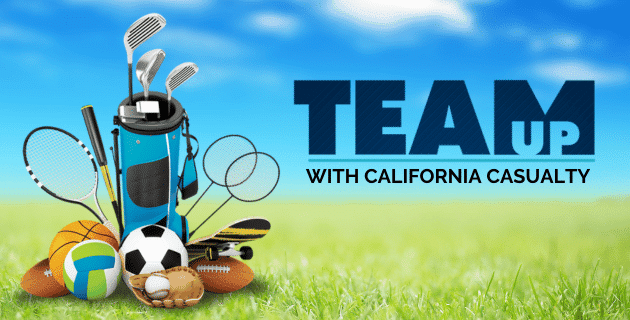
by California Casualty | Educators, In Your Community, News |
California Casualty has delivered $1,000 Thomas R. Brown Athletic Grants to educators at 10 public middle and high schools across five states to help support their school sports program(s). Since its inception in 2010, the Thomas R. Brown Athletics Grant Program has helped fund burdened athletic programs in 773 public schools across the nation.
Named in honor of Tom Brown, an ardent sports enthusiast and California Casualty Chairman Emeritus, the Thomas R. Brown Athletic Grant reflects his conviction that the values cultivated on the field—such as teamwork, trust, communication, and confidence—extend far beyond sports, enriching academic and personal development. Athletic programs play a pivotal role in shaping students’ character, fostering well-rounded individuals who excel both in the classroom and in life.
California Casualty recognizes the vital role of youth sports in promoting children’s physical and mental well-being. We are delighted to announce that the 2024/2025 Athletic Grants will support the following initiatives:
-
- Diablo High School – Concord, California – Girls Volleyball
- Natomas High School – Sacramento, California – Swim Team
- Paramount High School – Paramount, California – Girls Flag Football
- San Benancio Middle School – Salinas, California – Wrestling and Soccer
- Tahquitz High School – Hemet, California – Cross Country
- Aurora Frontier P-8 – Aurora, Colorado – Boys & Girls Basketball
- Carmody Middle School – Lakewood, Colorado – Carmody Bike Club
- Post Falls High School – Post Falls, Idaho – Track and Field
- Lebanon High School – Lebanon, Oregon – Unified Basketball
- Laramie Middle School – Laramie, Wyoming – Middle School Athletic Programs
Congratulations to all of our 2024/2025 grant recipients!
Mt. Diablo High School, Concord, CA
Applicant: Taylor Thompson
Athletic Program: Girls Volleyball
Photo L-R: Principal, Dr. Markell McCain, Recipient, Taylor Thompson, Mt Diablo EA President, Linda Ortega, and Angie Rajczyk
Natomas High School, Sacramento, CA
Applicant: Amanda Connelly
Athletic Program: Swim Team
Photo L-R: Swim Coaches, Eliana & Danielle, Amanda Keidel, Recipient, Amanda Connelly
Paramount High School, Paramount, CA
Applicant: Monique Reed
Athletic Program: Girls Flag Football
Photo L-R: TAP president, (DeeDee) Ardelia Aldridge, PE Coach, Frank Bignami, Flag Football Coach, Monique Reed and school principal, Jill Hammond.
San Benancio Middle School, Salinas, CA
Applicant: Phillip Snell
Athletic Program: Wrestling and Soccer
Photo L-R: Principal, Joe Carnazzo, Recipient, Phillip Snell
School: Tahquitz High School, Hemet, CA
Applicant: Shelly Hannah
Athletic Program: Cross Country
Photo: Recipient, Shelly Hannah
Aurora Frontier P-8, Aurora, CO
Applicant: Leila Malsam
Athletic Program: Boys & Girls Basketball
Photo L-R: Jolie Spence, Recipient, Leila Malsam and AEA President, Linnea Reed-Ellis
Carmody Middle School, Lakewood, CO
Applicant: Rob Wright
Athletic Program: Carmody Bike Club
Photo L-R: CEA Executive Committee and JCEA Secretary, Ang Anderson, Recipient, Rob Wright, and Jolie Spence
Post Falls High School, Post Falls, ID
Applicant: Brian Etchison
Athletic Program: Track and Field
Photo L-R: Assistant Principal, Mike Mclean and Recipient, Brian Etchison
Lebanon High School, Lebanon, OR
Applicant: Sheridan Echternach
Athletic Program: Unified Basketball
Photo L-R: Dee Dee Templeton, Recipient, Sheridan Echternach and Lebanon EA President, Bonita Randklev
Laramie Middle School, Laramie, WY
Applicant: Jamie Simmons
Athletic Program: Middle School Athletic Programs
Photo L-R: Jolie Spence, Jamie Simmons and Greg Herold (Uniserv Director)







